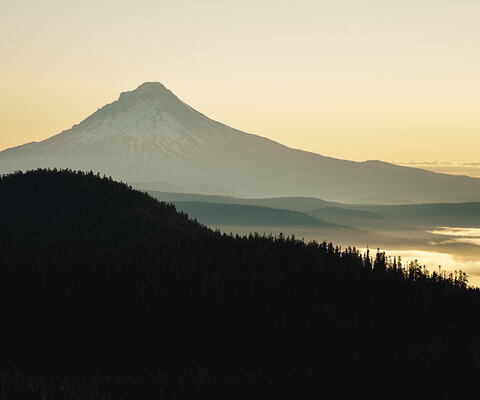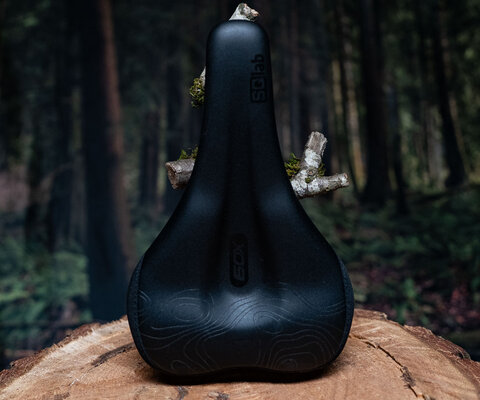
The Blues Brother How Yugoslavia's Masterpiece Came Through in the Clutch
Words by Kurt Gensheimer | Photos by Victor Brousseaud
Most American kids dream of the day they turn 16. It’s the day they can finally escape the wrath of their parents by having the freedom to drive a vehicle unsupervised.
The freedom to do brake stands, to smoke through a brand-new set of Bridgestones and to do redline transmission drops. The freedom to joyride in dad’s immaculate Mercedes while he’s out of town on business. Even the freedom to wrap that same Mercedes around a telephone pole after trying to impress a few girls walking home from school.
This also is typically the time when bicycles become the forgotten former mode of transportation. They hang upside down in the family garage, collecting dust and rusting away. For most teenagers old enough to drive, the bike usually conjures up memories of riding home from school and getting pelted in the head with a bottle of Yoo-hoo as the “cool kids” drive home in their mom’s shiny new Buick Estate station wagon.
On my 16th birthday, however, going to the DMV was the last thing on my mind. In fact, I didn’t end up visiting my neighborhood DMV until I was 25. For the better part of 10 years, I rode my mountain bike from home, to school, to work and back home again. Most of my friends said I had my head up my ass, which may have been true, but I reaped the benefits of not being dependent on a car. Riding a bike was every bit as liberating as driving a car, not to mention I was in the best racing shape of my life.

The only problem was that wherever I went on my bike, I showed up all pitted out and hungry. I also couldn’t keep a girlfriend for longer than a month. A few weeks of using the “my BMW is in the shop” line would pass by and my story became dubious at best.
After getting fired from two jobs for conflicts with co-workers over my Italian meatball armpit odor and my failure to keep a steady girlfriend, I decided it was time to cave in and buy a car.
That’s when my fateful encounter with the former Yugoslavia’s greatest contribution to modern engineering, the Yugo, occurred. For five years, I’d commuted by bike from Redwood Estates, California to Cupertino and back every day, a 40-mile round trip with lots of climbing. Each day on my climb up Old Santa Cruz Highway, I’d see a BFI-garbage-dumpster-blue Yugo sitting out in front of an old redwood cabin. It must have sat in the same place for nearly a year without moving so much as an inch.
Although it only had 47,000 miles on the odometer, the shelf life of a Yugo was half of even a craptastic car like the Geo Metro. Still, I figured that a hack-engineered shitbox, middle-aged and not being used, could be the perfect first car. The only problem was that I hardly had enough cash to buy replacement tires for my bike, let alone for a car. Then I found out that replacement Yugo tires were actually cheaper than a new pair of Onza Porcupines.
I left a note on the cracked, bird poopstained windshield and crossed my fingers for a phone call. Two days later, I got a call from the owner, who also happened to be a mountain biker. When I offered an old GT Avalanche and two hundred bucks cash for the Yugo, he jumped all over it. At first I thought a bike for a car didn’t seem like a fair trade, but then again, this was no ordinary car. It was a Yugo. No wonder that guy was so quick to jump on a bike and two Benjamins.
ADMITTEDLY, AT 115 MILES PER HOUR, THE YUGO FELT LIKE IT WAS GOING TO SPONTANEOUSLY COMBUST LIKE THE BLUES BROTHERS’ DODGE MONACO COP CAR

The first thing I did after the seller helped me to push-start the Yugo down Old Santa Cruz Highway was to drive over to my friend Simon’s house and show it off. And the first thing out of Simon’s mouth was, “Let’s see what it can do on Highway 17.” For those who are not familiar with Highway 17, it’s a narrow, winding road that snakes up the Santa Cruz Mountains to an elevation of 2,000 feet above sea level and then descends all the way to the coast. It’s the perfect road for a Porsche. But for a Yugo, not so much. Or so I thought.
To the amazement of us both, the Yugo hummed like a slot car and topped out at an approximate speed of 115 miles per hour in Scotts Valley on two bald tires, a snow tire and a fourth tire that didn’t fit the rim correctly. Admittedly, at 115 miles per hour, the Yugo felt like it was going to spontaneously combust like the Blues Brothers’ Dodge Monaco cop car, so we resolved to never push triple digits again. The first trip from Los Gatos to Santa Cruz and back was a success, so Simon and I slapped a bike rack on Ol’ Blue and turned it into our official race vehicle.
You aren’t a true mountain biker until your bike out-values your car. In this case, my Specialized M2 was worth 10 times the purchase price of my Yugo. In fact, the disparity was so great that once I left the Yugo running in a 7-Eleven parking lot and came out of the store to find that someone had turned off the car, took the keys, unlocked the bike rack, stole my M2 and put the keys back in the ignition. I chased the culprit down, but just as I was closing in on him I blew a coil and the Yugo died.
For the next three years, the Yugo purred all over California as our primary means of race transportation. It went to Whiskeytown, Downieville, Santa Barbara, Keyesville, Mammoth Mountain and even the Lemurian Classic. The Yugo got around. It got around quite well in fact, with nary a problem until we lost the entire exhaust system while rallying it on dirt roads east of Mammoth Lakes. That incident inspired my first aftermarket modification to the Yugo: custom exhaust. After driving back to our hotel with the 60-horsepower engine roaring louder than a Boeing 747 on takeoff, we rigged the exhaust with metal coathangers found in our room.

Our custom exhaust was just the tip of the iceberg for Ol’ Blue’s quirky characteristics. If a passenger wanted to get out, it wasn’t as easy as opening the door lever. There was no door lever. The driver had to get out, walk around the car and let the passenger out. There also weren’t any window cranks. Actually, there was one. It had to be shared among all occupants of the car and kept in a special “window-crank holder compartment,” which, of course, didn’t serve its purpose very well. The window crank disappeared after a year, after which point a pair of Vise-Grips filled its duties.
Owning a Yugo required either a calculator or an occupant with exceptional math skills. Because there was no functioning gas gauge, we had to calculate how many miles we’d get out of the eight-gallon gas tank. Normally it came to about 160 miles, but when you don’t have a trip odometer and take one too-many bong hits, the math quickly becomes fuzzy. That’s when you find yourself stranded on the side of a deserted highway with no gas two hours before the start of a bike race. Believe it or not, this happened more than once.
At 99,000 miles, the shifter linkage started to go, the transmission was howling like a maimed beagle, and I started to get the gut feeling that the car was on the verge of a meltdown. All told, during 50,000 miles of abusive driving and race trips, I didn’t spend more than $300 on repairs. For all the hell it caught for being shoddy and unsightly, my blue Yugo was damn reliable. And its resale value still ranks as the highest of any car I’ve ever owned. I sold it to a friend for a hundred bucks and a sixer of Anchor Steam. After 50,000 miles of use, it had only lost $100 in value ($94 if you count the retail value of San Francisco’s original craft beer).
My buddy ended up driving Ol’ Blue to Oregon two times before the transmission finally gave up the ghost. The Yugo met its demise at the car crusher at 106,000 miles. The junkyard gave him $100 for the car, which meant he broke even apart from the cost of the six-pack. It was clearly the best car investment he’d ever made as well.





